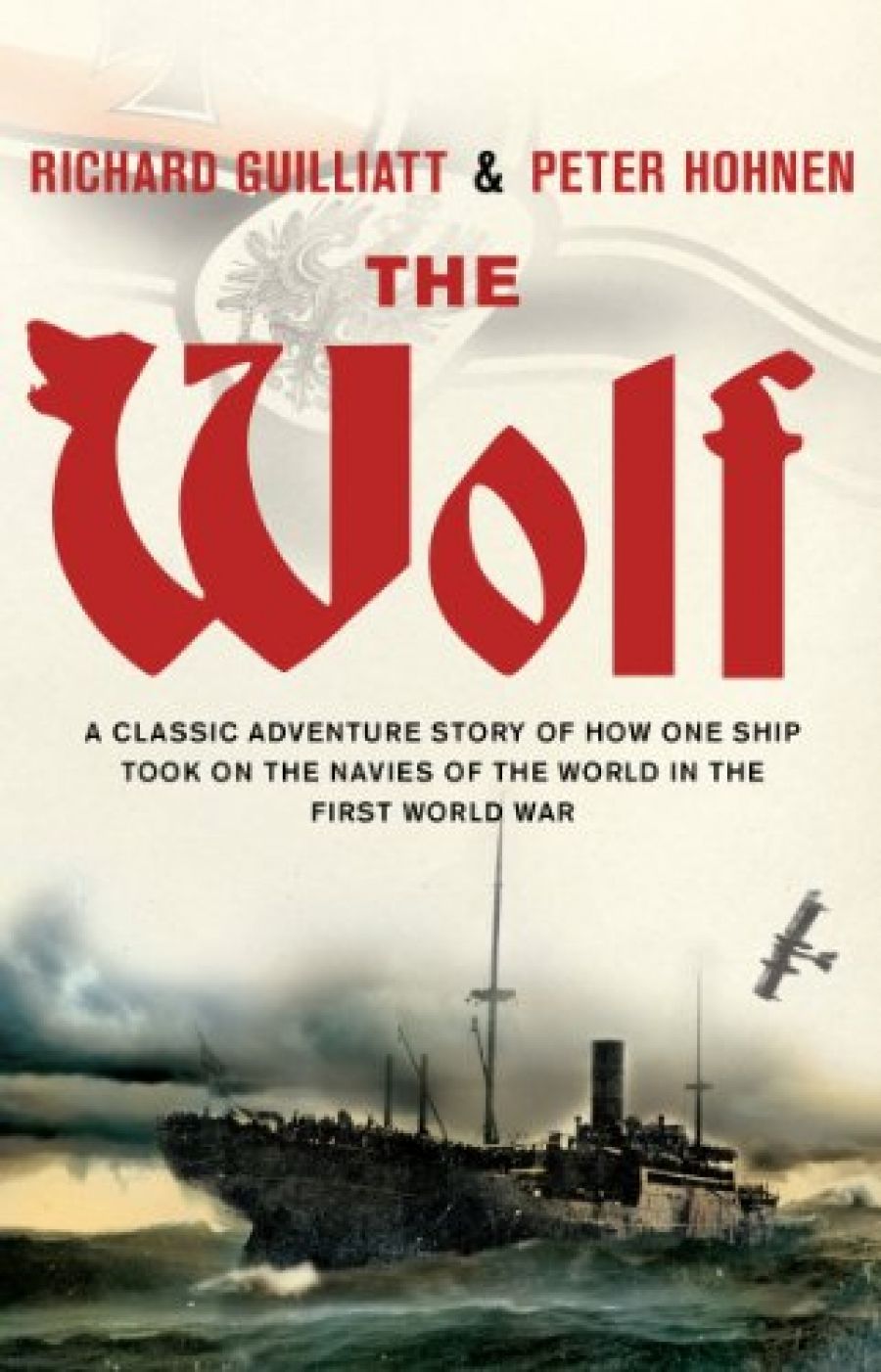
- Free Article: No
- Contents Category: History
- Review Article: Yes
- Online Only: No
- Custom Highlight Text:
Late in November 1916, the German commerce raider Wolf, laden with 100 tonnes of mines, set out on a journey of 100,000 kilometres across three oceans. After the ship reached home, in February 1918, 442 days later, its guns and mines had destroyed more than twenty Allied vessels. Hundreds of their crews and passengers had been held captive. When the voyage of the Wolf began, German U-boats were sinking hundreds of thousands of tonnes of shipping each month. The belated adoption of the convoy system drastically reduced those losses, so that the Germans, rather than the British, suffered the worse privation in the last year of the Great War. In that time, Wolf was the only German surface warship not penned up by the British naval blockade.
- Book 1 Title: The Wolf
- Book 1 Subtitle: The most audacious warship of World War One and its 15-Month campaign of terror against Australia and the world
- Book 1 Biblio: William Heinemann, $34.95 pb, 338 pp
- Book 1 Readings Link: booktopia.kh4ffx.net/ydGNG
The last part of the book’s subtitle is awkward. Surely a campaign ‘against … the world’ was grandiose enough to include Australia. In fact, one of the most important lines of inquiry in The Wolf is into the blundering efforts of the Australian government and military to argue that there was no German ship menacing the east coast of the continent. The loss of ships to mines was put down to separate sabotage by waterside workers and German fifth columnists. Hysteria against these manufactured internal enemies complemented the Hughes government’s censorship and distortion of war news, as well as its unsuccessful attempts twice to legislate for conscription. There was another aspect to this confected panic. Persistent false sightings of German planes, submarines and soldiers were ‘all of them phantoms sprung from the collective anxieties of the community’. In the elegant words of the authors, Australians were ‘longing for some proximate evidence of the conflict that had cost them so dearly’.
Through all its triumphs and travails, the Wolf was commanded by the austere figure of Karl Nerger. Much of his time was spent alone in his cabin, plotting the ship’s course, and reading Schopenhauer. When captures were made, Nerger meticulously followed the rules of sea warfare. He had committed the Wolf not only to the destruction of enemy shipping and the diversion of Allied naval resources in pursuit of him, but to avoiding all ports (if not anchorages). Thus, the Wolf lived off the water, as it were, plundering coal, food and assorted supplies from the ships that were intercepted. The seizure of the Matunga off New Guinea yielded one month’s liquor supply for all the inhabitants of Rabaul, and Edward Noble, brother of the erstwhile Australian test cricket captain Monty Noble. Edward was one of several celebrities to cross the path of the Wolf. Tennis star Norman Brookes survived the sinking by a mine of the Mongolia out from Bombay, while Somerset Maugham’s lover Geoffrey Haxton, ‘one of the most extravagantly unashamed homosexuals of his era’, became a captive of Nerger.
Although other privateers such as the Emden and the Leopard had been sunk or wrecked, the luck of the Wolf held. Nerger was assisted by the fact that ‘by early 1917 every significant warship in the newly formed Royal Australian Navy was far from home’, and by being able to overhear unguarded wireless transmissions. His warship was also a prison ship, and The Wolf relates one of the strangest of prisoner of war stories. Affinities developed between officers among the seamen on each side. There were escapes. Two men hid on Sunday Island, and the Wolf had sailed long before their absence was remarked. Neither trace nor word was ever heard of them. The prisoners on the Spanish vessel IgotzMendi (a vessel that the Wolf had seized and to which some captives were transferred) escaped ‘just hours from Germany’ when the ship ran aground on rocks off neutral Denmark. The ‘oldest SOS device in the sailor’s trick-bag’, a message in a bottle, thrown overboard in the Celebes Sea, eventually, and too late, revealed the rampaging exploits of the Wolf to Allied intelligence.
At times during his long and lonely voyage, Nerger (and no doubt some among his nearly mutinous crew) felt himself to be ‘a ghost in the machinery of war’. Few in Germany had expected his triumphant return to Keil harbour, having survived the British navy, Atlantic gales and a leaking hull. In October 1917, Lord Curzon had belittled the Wolf as ‘a solitary speck on the boundless ocean’. The comment was redolent of embarrassment at how the raider had eluded the Allied navies for so long. The official Australian naval historian of the Great War, Arthur Jose, would offer a similarly unconvincing disparagement. Now we can be thankful that Guilliatt and Hohnen have given us this fuller, fairer and gripping account, alive to the quirks and sorrows of wartime misadventure, and to the anguish and salvation of individuals. There are postwar stories, too, of those who sailed on the Wolf. The epilogue gives a bracing and melancholy account of what became of some of them in this voyage that has been so richly retrieved for the present.


Comments powered by CComment